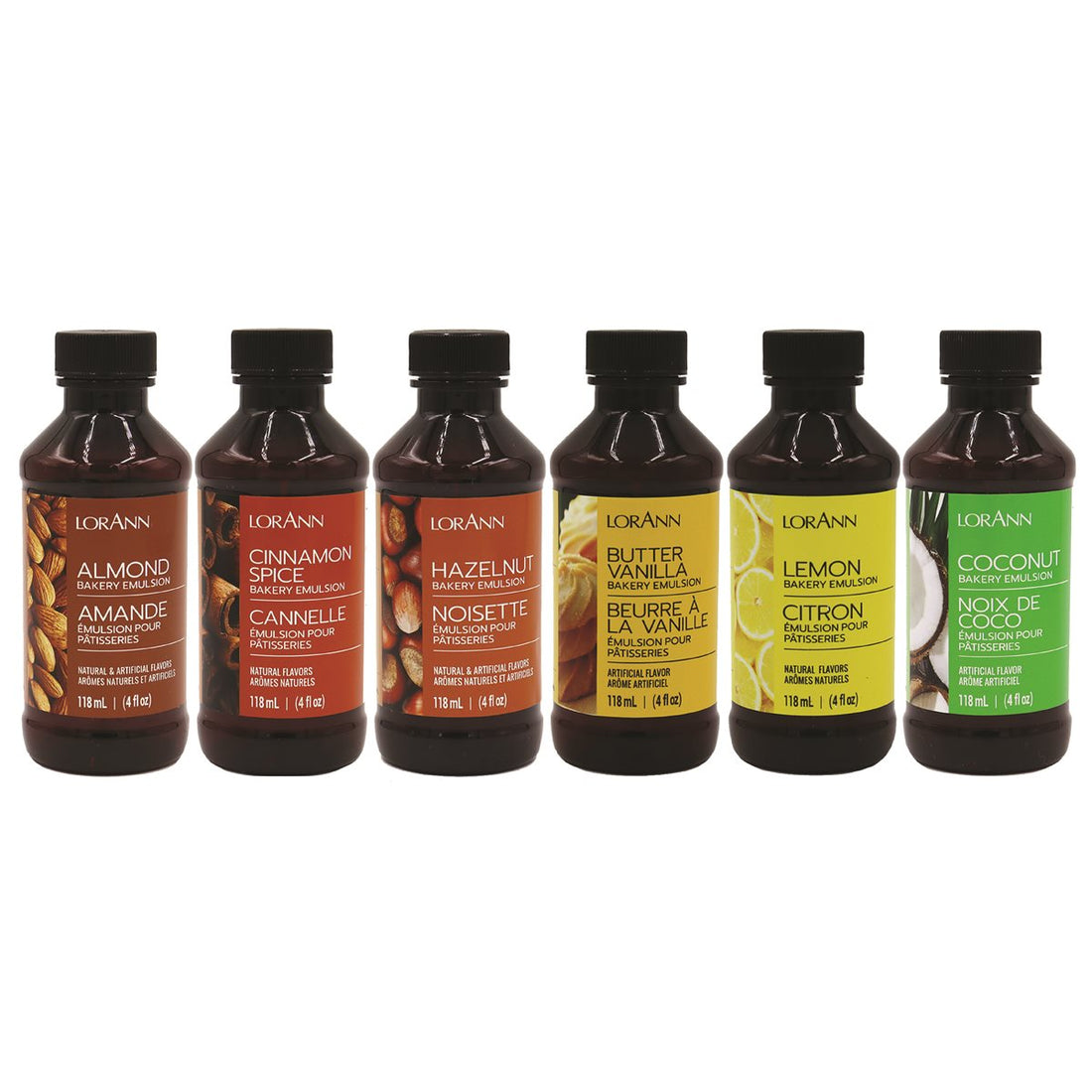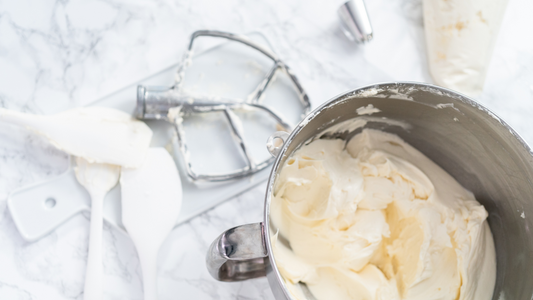Ingredients or terms that raise question marks in the mind keep popping up in baking recipes. Have you ever wondered what the difference is between flavors and extracts or what an emulsion is? In the following guide you will find helpful information about flavors, emulsions and extracts.
flavors
Flavors have taken the baking world by storm. The more flavors you try and use, the more you'll notice the differences between them. The relatively broad term itself is responsible for this. An aroma can have both a taste and a scent. Flavors that enhance the taste of a dish are preferred for baking. If a cake only smelled like vanilla but didn't taste like it, a feeling of disappointment after trying it could hardly be avoided.
Vanilla is also a very good example to show you the manufacturing process of flavors. Both natural and artificial flavors can serve as a basis. If you buy a natural vanilla flavor, it comes from the vanilla bean. If vanillin ends up in your shopping basket, it is an artificial aroma. This usually involves combining several ingredients in order to imitate both the smell and the taste. The differences are noticeable in the price, among other things, so that a higher price is a good indicator of a natural aroma.extracts
Extracts are found within natural flavors. For example, the pulp of the vanilla pod is extracted and placed in a highly concentrated liquid. Mostly alcohol is used for the production.
Due to the concentrated form, opening a bottle of extract is often associated with a high abundance of aromas that make their way to your nose. While it's tempting to add an increased amount of extract to a cake or muffin batter, you should use it very sparingly at first. Just a few drops can be enough to give the baked creations an intense aroma. Extracts can be used in the following baked goods: cakes, cupcakes, creams, ice cream, yoghurt and much more.emulsions
Emulsion is a chemical term that describes two mixed liquids that would not naturally combine. You can find classic examples of this in oil and water, among other things. The greasy oil practically floats on the water and does not mix with the underlying liquid. In baking, a large number of recipes require the use of liquids containing water and fat, such as milk and oil. So that you don't have to use alcohol for the connection, this is where the emulsifier comes into play. These are substances that are soluble in both liquids.
We would recommend an emulsion for sugar cookies and royal icing. It can be baked in the batter or used unbaked in royal icing. It has the advantage of being more heat resistant and cheaper than an extract. If 1 teaspoon of extract is specified in a recipe, you can exchange this 1:1 with 1 teaspoon of emulsion. Other possible uses: fondant, buttercream, shakes, ice cream, drinks, yoghurt and much more. .What is your favorite thing to bake with?
Hopefully you were able to add a vocabulary or two to your baking knowledge with this article.
Have fun experimenting with delicious flavors.




